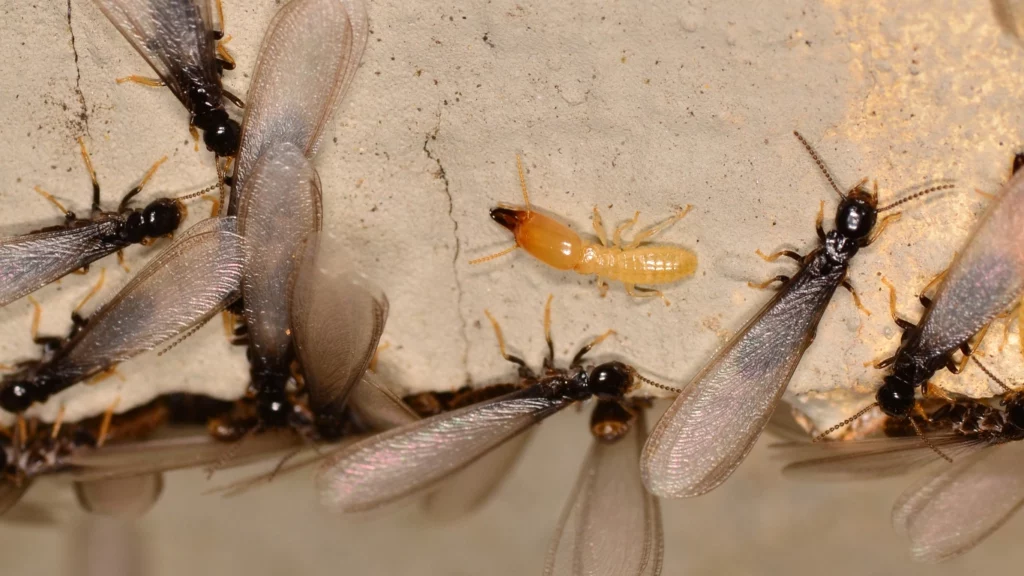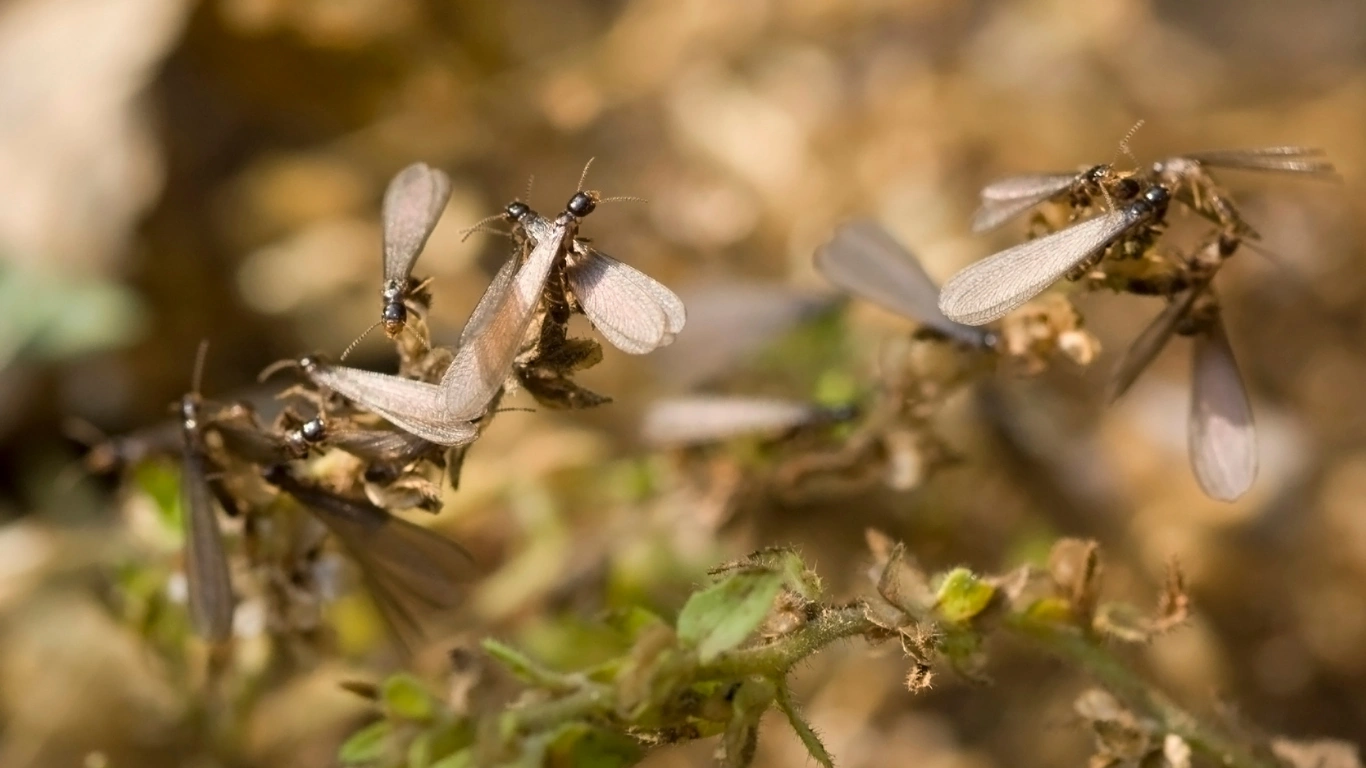When spring turns to early summer in Victoria, many homeowners enjoy the warmer weather and longer days. Unfortunately, October to December also brings a less welcome visitor—termite swarm season. This is the time of year when termites leave their existing colonies to establish new ones, putting properties across Victoria at risk.
Whether you own a home, an investment property, or manage real estate on behalf of others, understanding termite swarm behaviour is essential. In this blog, we’ll explain what termite swarming is, why it happens, how to spot the signs, and most importantly—how to protect your property before damage becomes a costly nightmare.
What Is Termite Swarming?
The Lifecycle of Termites
Termites are social insects that live in colonies underground or within timber structures. Each colony has a queen, workers, soldiers, and alates (winged termites). During termite swarm season, usually from October to December in Victoria, these alates leave their nest in large numbers to find new places to build colonies.
Why Swarming Matters to Property Owners
A termite swarm is a clear warning sign that colonies are nearby. Each swarm can consist of thousands of winged termites, many of which will succeed in forming new nests. That means properties in the area are at immediate risk of infestation—and structural damage often goes unnoticed until it is severe.
Why October to December Is Termite Swarm Season in Victoria
Seasonal Conditions That Encourage Swarms
In Victoria, swarming is most common in the warmer, humid months of late spring and early summer. Termites wait for still, moist evenings—often after rainfall—to leave the nest. These conditions give alates the best chance of survival as they search for suitable soil or timber in which to establish a new colony.
How Climate Impacts Termite Activity
Changing weather patterns, including wetter springs and hotter summers, can extend or intensify termite swarm season in Victoria. This means homeowners need to remain alert not just in November, but from early October right through to the end of December.

Signs of Termite Swarming Around Your Property
Knowing what to look for during termite swarm season could save you thousands in repairs. Here are the most common signs that termites are active nearby:
1. Discarded Wings
After swarming, termites shed their wings. Finding small piles of wings around window sills, door frames, or light fittings is one of the clearest indicators of termite activity.
2. Mud Tubes and Shelter Tunnels
Worker termites build mud tubes to protect themselves while travelling from the nest to food sources. These pencil-width tubes are often found along brickwork, foundations, or timber beams.
3. Soft or Hollow Timber
Tap on timber structures like skirting boards, door frames, or outdoor decking. If they sound hollow or feel soft, termites may already be feeding inside.
4. Clicking Sounds Inside Walls
Some termites make faint clicking or rustling noises as they eat and communicate. If you hear unusual sounds in quiet rooms, it could be termites at work.
5. Sagging Floors or Bubbling Paint
Termite damage can weaken structures, causing uneven flooring, distorted doors, or bubbling paint where moisture builds up behind the surface.
The Cost of Ignoring Termite Swarms
Structural Damage
Termites can cause extensive structural damage in as little as six months. Once they establish a nest inside timber, they feed continuously, often unnoticed until the damage is severe.
Financial Loss
Homeowners may face repair bills running into tens of thousands of dollars. Worse still, termite damage is not covered by standard home insurance policies, leaving owners to foot the entire cost.
Impact on Property Value
For property investors and sellers, termite infestations can significantly reduce property value. Real estate agents are required to disclose termite history, making it harder to sell affected homes.
Why Professional Termite Inspections Are Essential
The Limits of DIY Detection
While discarded wings or mud tubes are obvious signs, termites are experts at staying hidden. In fact, most infestations are only discovered during professional inspections or when the damage is already advanced.
Benefits of a Professional Inspection
- Detects early signs before damage escalates
- Provides a full property risk assessment
- Identifies areas vulnerable to future infestation
- Gives peace of mind for homeowners, investors, and property managers
How Often Should Inspections Be Done?
Experts recommend professional termite inspections at least once a year in Victoria, and more frequently in high-risk zones or older properties. Scheduling inspections during termite swarm season is especially important.
How to Protect Your Property During Termite Swarm Season
Prevention is always better than cure. Here are some proactive steps homeowners and investors can take:
Reduce Moisture Around the Home
- Fix leaking taps, pipes, or gutters
- Ensure proper drainage around the property
- Keep ventilation areas clear to reduce dampness
Eliminate Termite Food Sources
- Store firewood away from the house
- Remove tree stumps, mulch, and timber debris near foundations
- Avoid timber-to-soil contact in garden landscaping
Regular Property Maintenance
- Check wooden decks, fences, and pergolas regularly
- Seal cracks and gaps in foundations
- Repaint or reseal exposed timber to reduce vulnerability
Invest in Termite Protection Systems
Professional termite management may include barrier treatments, chemical soil treatments, or baiting systems. These provide long-term protection and peace of mind.
Why Now Is the Time to Act
October to December is not just a peak time for termite swarms, it’s the best opportunity for property owners to stay ahead of potential infestations. Waiting until visible damage appears can be a very costly mistake.
Whether you’re a homeowner protecting your family home, a property investor safeguarding your portfolio, or a real estate professional managing multiple assets, booking a termite inspection during swarm season in Victoria is one of the smartest decisions you can make.
Final Thoughts
Termites may be small, but the damage they cause is enormous. Termite swarm season in Victoria (October to December) is the most critical time of year to stay alert. By knowing the signs of termite activity, investing in preventative measures, and booking regular professional inspections, you can protect your property from one of Australia’s most destructive pests.
Don’t wait for the damage to show, take action this swarm season and keep your property safe.
FAQs
Termite swarm season is from late spring to summer (October to December) when winged termites leave their colonies to establish new nests.
Common signs include discarded wings, mud tubes, hollow timber, bubbling paint, and clicking sounds inside walls.
Yes, annual inspections help detect infestations early and prevent costly structural damage.
Standard home insurance typically does not cover termite damage, making preventative inspections essential.


